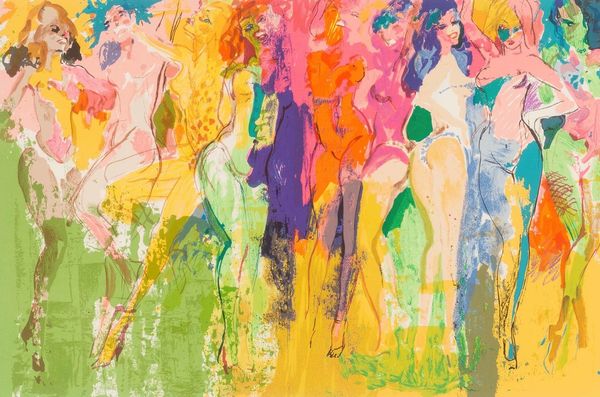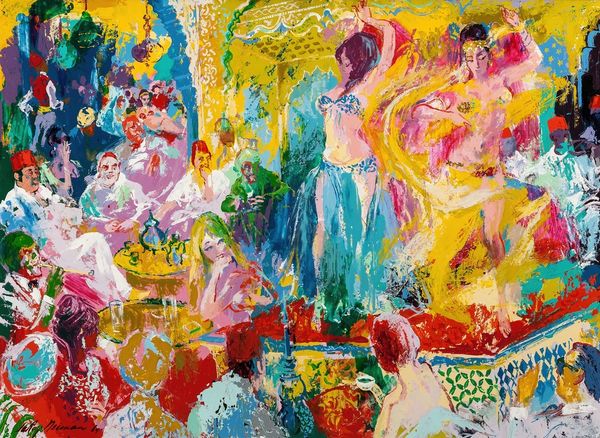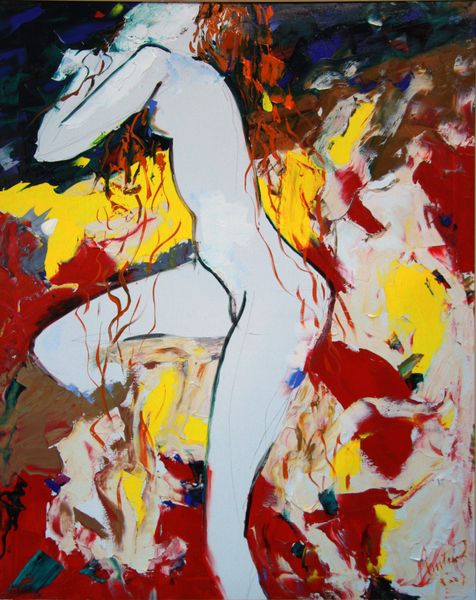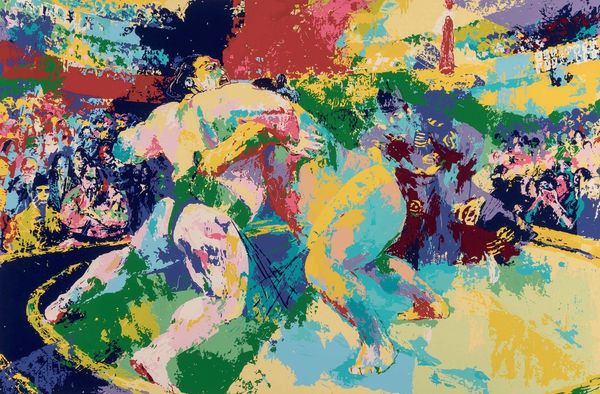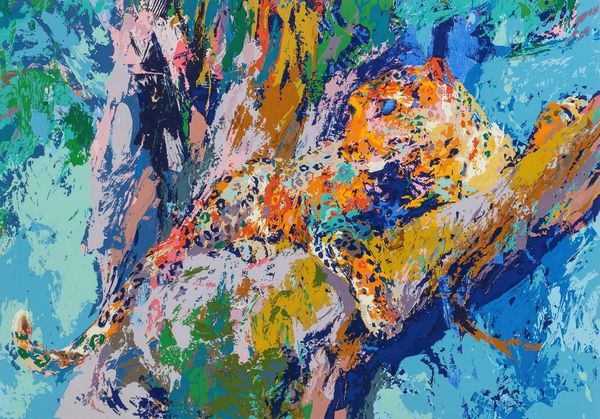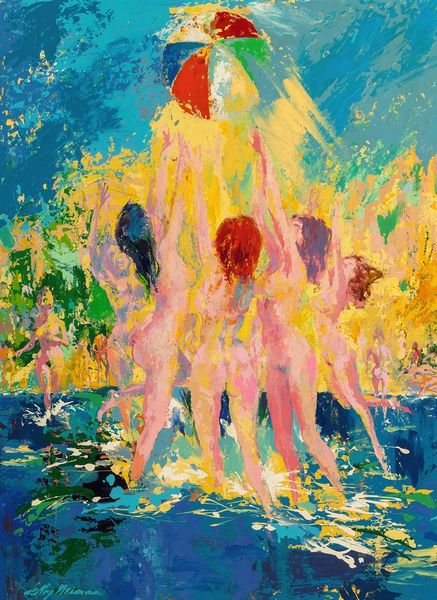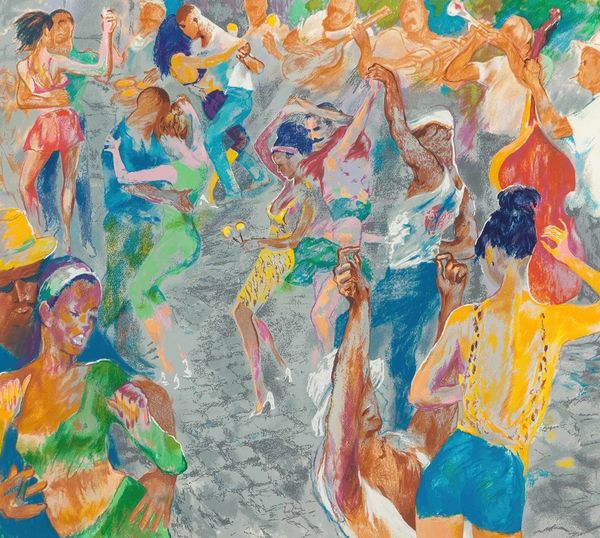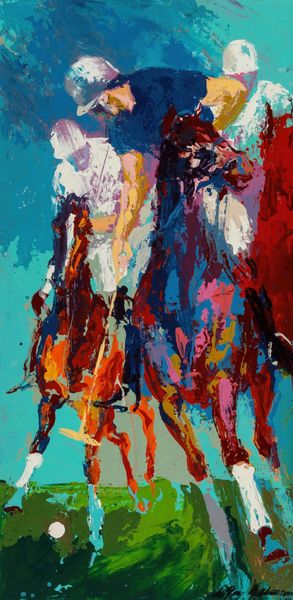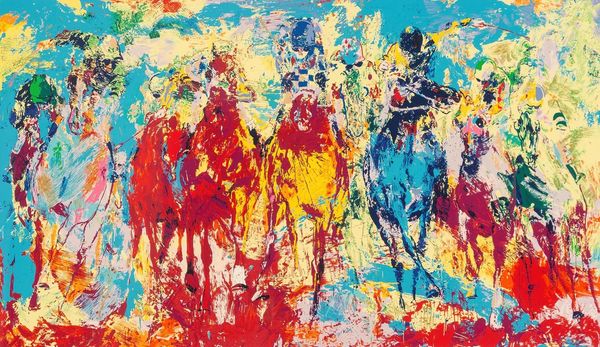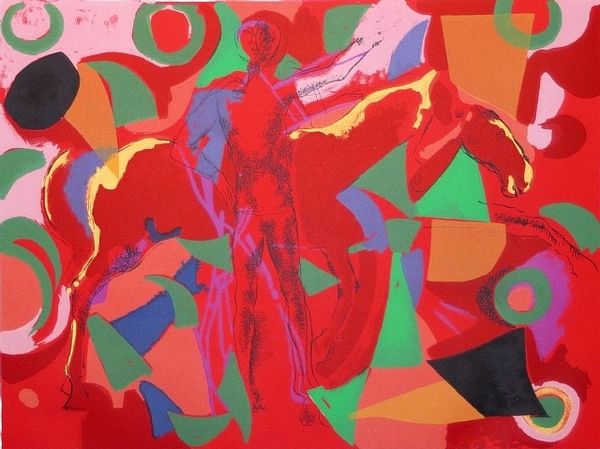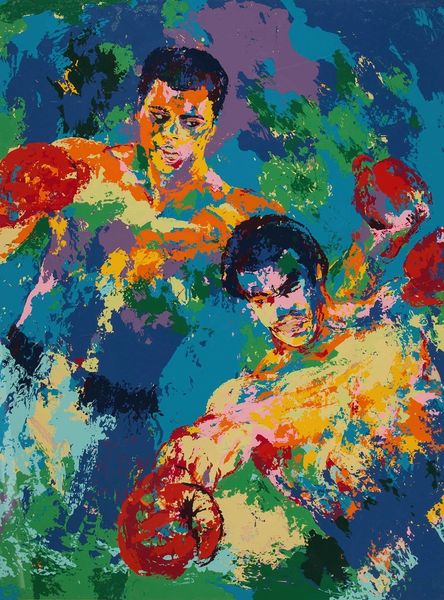
Copyright: Modern Artists: Artvee
Curator: Well, this is exuberant! So much chroma, almost overwhelming. Editor: Indeed! Let's take a look at LeRoy Neiman's "Las Passasitas Dancers" created in 1982, using acrylic on canvas. You're right, there is something overwhelming but also captivating in its bold presentation. What symbols do you see, beyond just dancers? Curator: For me, it's about the explosion of colour, the sheer energy, the carnivalesque liberation. I'm immediately struck by its ties to Fauvism. Those intense colours have an almost primal feel to them. Editor: I agree, there's definitely a connection. Looking closely, note how Neiman uses a seemingly chaotic arrangement of paint strokes and bright colours—but there is an underlying structural balance achieved by his deployment of line, his mastery of color interaction and interplay. It's hardly accidental or simply decorative! I find it difficult to pigeonhole within Pop Art despite its intensity. It reminds me that categories can obscure more than reveal. Curator: I'd argue it contains aspects of both styles. It hints at deeper archetypes in society, perhaps related to Dionysian festivals where such colourful abandon was socially "permitted", or even celebrated! Those gatherings channel social unrest into performance. Editor: Fascinating interpretation. Perhaps these women stand as modern symbols, then, of the ritualized expression that defines and renews culture? Curator: It’s hard not to interpret their dynamism as celebratory defiance of social norms through dance. It projects pure human joy. What else catches your eye, formally speaking? Editor: I'm intrigued by the brushstrokes, they don't attempt to represent reality. It’s as if he is trying to portray motion as color, but maybe more than anything else, I think Neiman expresses pure delight in his materials! It is something joyful. Curator: It absolutely projects joy; maybe we ought to keep that word in mind when looking at all sorts of artworks: not merely, "What do I think?" but also, "What delight is held, right here, by line and hue, inside of that frame?" Editor: That’s such a good point. It recontextualizes the art making itself!
Comments
No comments
Be the first to comment and join the conversation on the ultimate creative platform.
